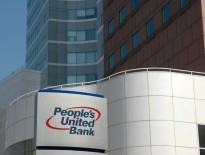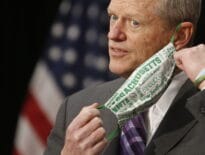On the heels of a difficult year that saw substantial turnover in its executive leadership, a $554 million goodwill impairment charge and investor calls to explore selling the company, Berkshire Bank’s new leadership team announced a major effort to improve the bank’s performance over the next three years.
CEO Nitin Mhatre outlined a three-point strategy that he said will make sure the $12.8 billion-asset lender can compete effectively as its comparably-sized local rivals are growing to over $20 billion in assets through mergers and other regional banks active in its markets pursue their own combinations to form even larger entities.
To do so, Mhatre said in a presentation Tuesday morning, Berkshire plans to grow its mortgage lending, business banking, SBA lending, asset-based lending, commercial real estate and wealth management businesses and beef up its consumer-facing technology. The bank plans to run-off higher-risk, non-relationship lending in its current portfolio, Mhatre said.
“We’re going to get better before we get bigger,” he said.
The bank will look to revamp its incentive structure to help fuel this growth, as well as hire new staff away from competitors engaged in one of this year’s many mergers.
Berkshire would fund the transformation in part by reducing its branch footprint by 5 to 10 percent from the current 106 it currently operates excluding locations in and around the Philadelphia metro which it is looking to sell. The bank also believes changing customer preferences will mean fewer branches will be necessary in the future, Mhatre said.
The bank believes it can retain most of the deposits held in its New England and New York branches through its MyBanker concierge program, COO Sean Gray said. In the 40 branch closures Berkshire has undertaken in recent years, the bank managed to retain 95 percent of those locations’ deposits, he said.
To attract new customers, the bank plans investments in marketing technology and customer-facing software to offer both a high-tech and personalized experience to customers, Mhatre said. CIO Jason White said future investments will let the bank segment its customers more, including the creation of a small business-specific app.
The bank also hopes to lean on and grow its existing reputation as a “socially conscious” bank to become the leading socially responsible community bank in its markets as a principal way to differentiate itself from Rockland Trust Co. and Eastern Bank, Mhatre said. Eastern has historically been one of Greater Boston’s leading corporate supporters of racial equity initiatives. The bank will measure its progress here via leading indexes of U.S. socially responsible companies and its net promoter score among New England banks, aiming to be in the top 25 percent of each.
The bank will create a committee tasked with monitoring the transformation, which the bank is branding as “BEST,” or “Berkshire’s Exiting Strategic Transformation.”
Overall, Berkshire hopes to improve its return on tangible common shareholder equity (ROTCE) by 680 to 880 basis points, increase return on assets by 76 to 81 basis points and grow pre-provision net revenue by $71 million to $91 million. The bank’s plans assume no Federal Reserve interest rate increases over the next three years, CFO Subhadeep Basu said, so any rate growth will improve the bank’s results.
“I feel confident about this having seen this and felt it before to do a transformation leveraging the team you have,” Mhatre said. “This has been built organically from the ground up [by Berkshire staff]. … We’re activating the organic growth muscle in the organization.”




 |
| 


